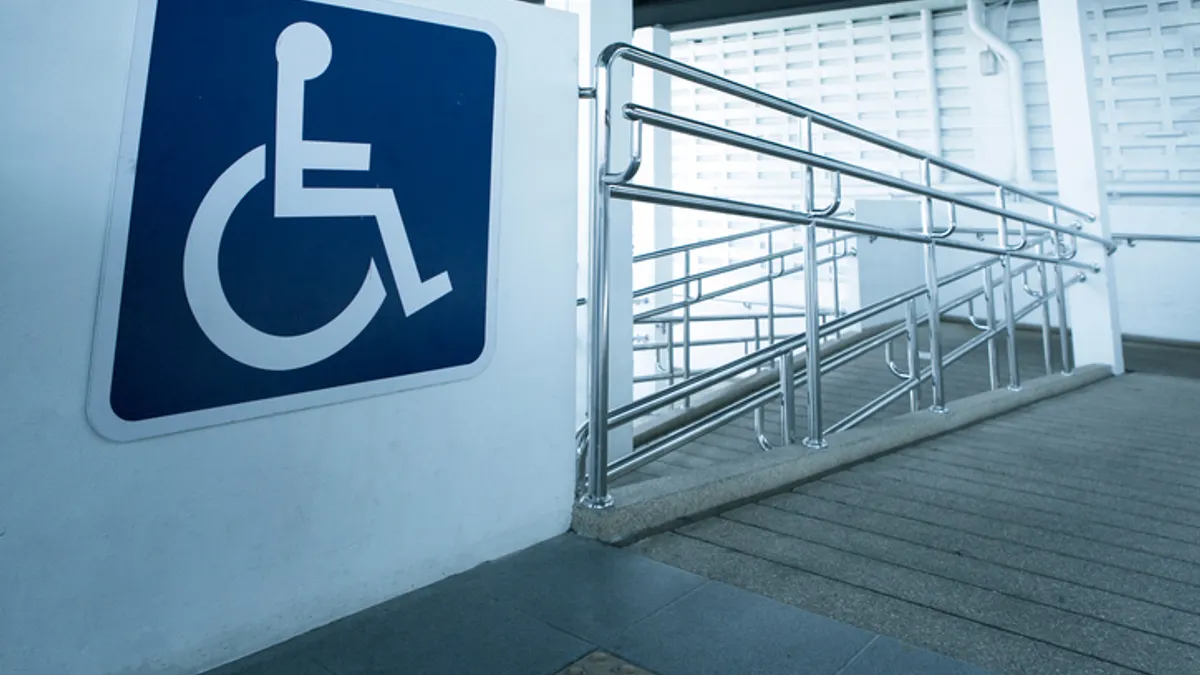New and existing buildings receiving funds from the U.S. Department of Energy won’t have to meet accessibility requirements starting Sept. 12 in a fast-tracked rule rescission that has alarmed disability-rights advocates.
The agency on May 16 used what’s known as a direct final rule to announce it’s rescinding a rule that’s been on the books since the 1970s requiring any building receiving federal funds, whether for new construction or undergoing renovation, to be made accessible.
DOE said the Section 504 rule, which was written by the then-Department of Health, Education and Welfare and incorporated by Congress into the Rehabilitation Act of 1973, is unnecessary because of other federal requirements, so it is fast-tracking the rule rescission.
“Given the general prohibition on discriminatory activities and related penalties … DOE finds these additional provisions unnecessary and unduly burdensome,” the agency said in the preamble to the rule rescission. “It is DOE's policy to give private entities flexibility to comply with the law in the manner they deem most efficient. One-size-fits-all rules are rarely the best option. Accordingly, DOE finds good reason to eliminate this regulatory provision.”
The agency intended to make the rescission effective July 15 but pushed the date back to Sept. 12 after it received more than 20,000 comments, a significant number of which were protesting the action.
Policy pushback
Disability-rights advocates say the agency is misusing the fast-track process. Direct final rules are intended for uncontroversial regulatory actions, like changing the name of a program, they say, not for rescinding a rule that’s required under federal statute, as this one is.
“The Department of Energy’s decision … is a direct attack on disability rights and part of a broader pattern of civil rights rollbacks aligned with Trump-era policies,” Robyn Powell, an assistant professor at Stetson University College of Law, told Mother Jones.
“I’ve never seen [the process] before in my career, and most of my colleagues report the same,” Claudia Center, legal director at the Disability Rights Education & Defense Fund, said in a Disability Scoop report.
DREDF asked its supporters to send a letter to DOE protesting the rescission, saying the agency action goes against Congress and the courts.
“Congress passed the Rehabilitation Act,” the suggested letter says. “Congress said it agreed with the 504 rules. Congress added the 504 rules to the Rehabilitation Act. The Supreme Court has looked at the rules and said they belong in the Rehabilitation Act. U.S. courts have spent years making sure people follow the rules.”
Advocates say they’re concerned other fast-tracked rescissions are to come.
“This action could be a ‘trial balloon’ for other agencies,” Center said. “There are more than 80 sets of Section 504 regulations across the federal government. This could be the first of many.”
Should the rescission take effect as planned, companies and other organizations that obtain DOE grants to make their buildings more efficient or for other purposes won’t need to take steps to make the buildings accessible if they’re not accessible already. Accessibility features can include ramps, wide doorways and railings.
The Section 504 rule gives building operators flexibility in how they meet the accessibility requirements, which are based on the Uniform Federal Accessibility Standards, created in 1984. For example, there’s no expectation for a building operator to make a structural change to a load-bearing wall to add an accessible feature. But reasonable changes that can be made should be made “to the maximum extent feasible,” the rule says.
Even with the rule rescinded, building operators that skip accessibility modifications still face liability risk under other laws, a disability lawyer says.
They “would still be open to liability under general non-discrimination requirements,” Amy Robertson, a civil rights attorney, said in the Disability Scoop report.















